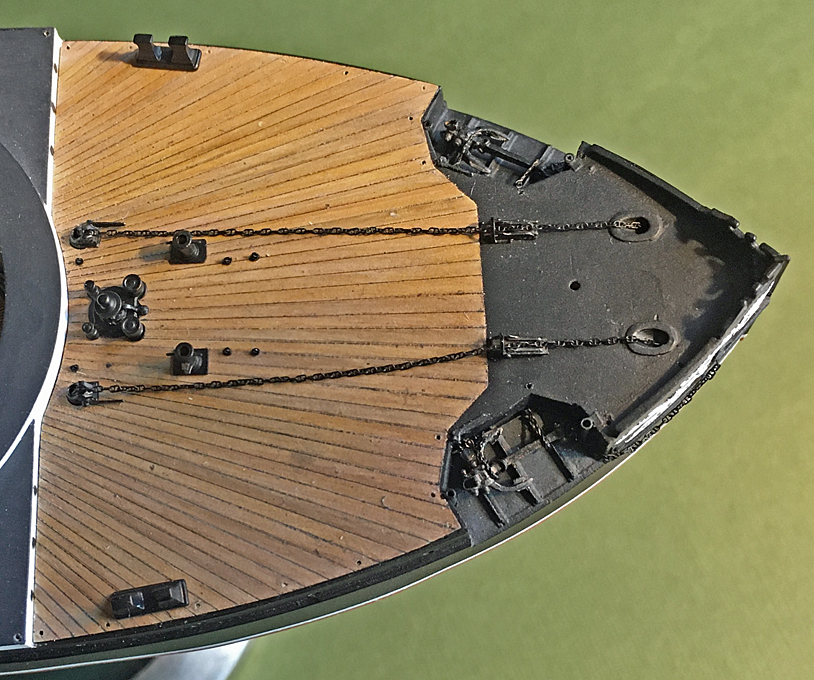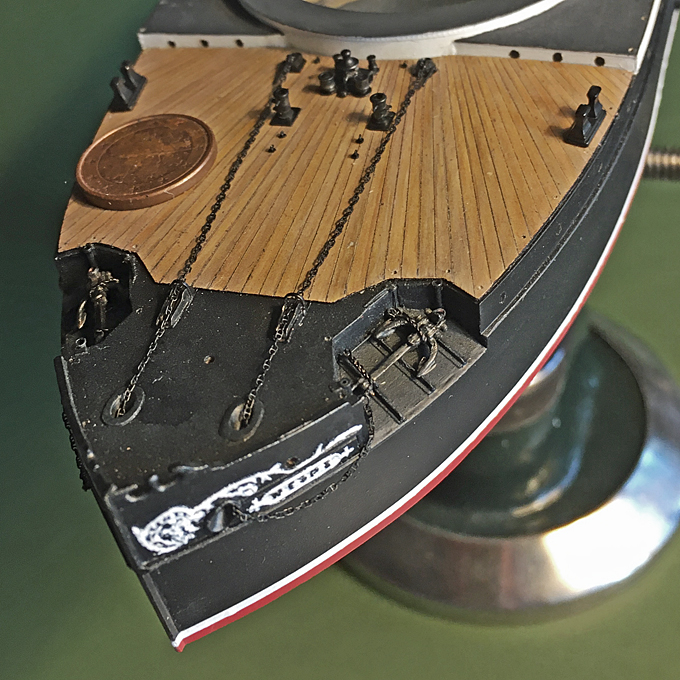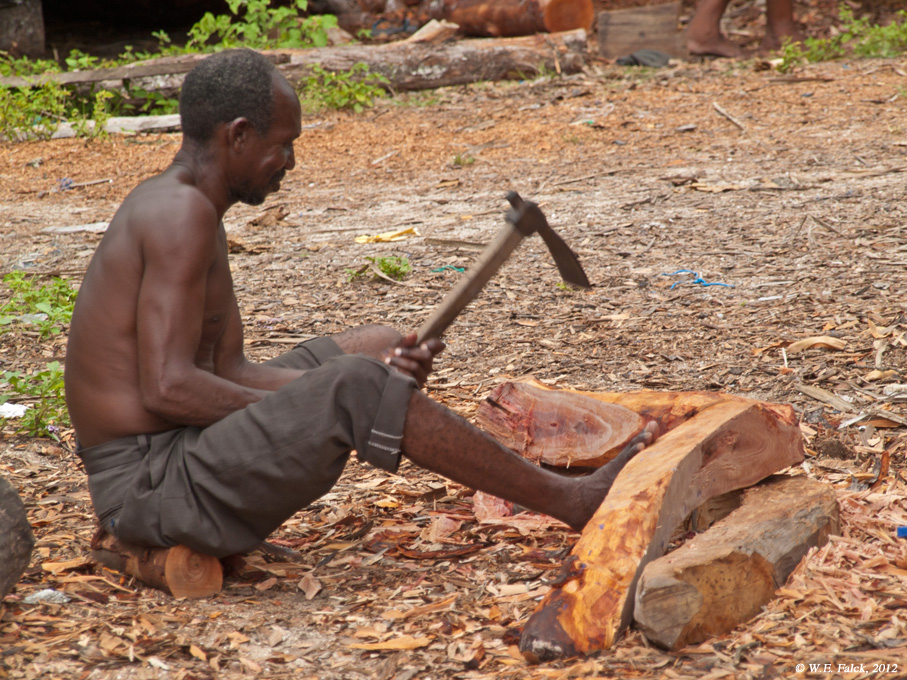-
Posts
6,370 -
Joined
-
Last visited
Content Type
Profiles
Forums
Gallery
Events
Posts posted by wefalck
-
-
I was quoting from memory and my memory sometimes is not the best anymore ... so obviously I only scored a near hit.
As to the violin: these were used, inter alia, as 'party boats', so not surprising that there would be also some musical entertainment.
- thibaultron and Aa-schipper
-
 2
2
-
A 'standing' gaff does not mean that it cannot be lowered. It means it is not normally lowered to make fast the sail. Standing gaff sails were typically fitted with three brails that allows it to be gathered up towards the gaff and the mast. Of course, when reefing, you would lower the gaff.
Towards the end of commercial sail and on some steamers there were real 'standing' gaffs and the sails were attached to them with a rail and runners, very much like our curtains, so that they could be gathered up to the mast.
It seems that on the British Islands the luff was mostly hooped to the mast, while on the continent and on the other side of the Big Pond lacing was more common, particularly also for smaller boats.
Similarly, in Britain gaff sails were only fixed with their clew to the boom, while in the USA they were mostly laced. In the last decades of sail, lacing became more common everywhere. When reefing a loose-footed gaff sail it is not tied down onto the boom, but to itself, in the same way as you would reef a stay-sail or a boom-less gaff fore-sail.
If you want to read-up on handling gaff-sails, I would recommend John Leather's 'Gaff Rig', though he is a bit biased towards yachting practice.
-
Didn’t Ab Hoving built a model after this drawing?
- druxey, Aa-schipper, thibaultron and 1 other
-
 4
4
-
Hhm, I don't think that this was such a good idea to put the sanding filler onto the wood before glueing - in this way the contact cement cannot key into the wood very well anymore and the solvent from the cement has nowhere to go to ... hope your copper sheathing will stick in the longer term
-
That's what I would have thought.
It's quite fascinating to see such a schooner being operated by a well-trained crew - around 2000 I was sailing in the British Virgin Islands, when in one of the little ports we stayed one of them arrived at dusk under sail, bearing up to the jetty with precision and taking down the canvass in a matter of seconds literally and making fast. Unfortunately, the next morning, when I wanted to check-up on her, she was already gone again.
I finally got around to really read John Leather's 'Gaff Rig' and he write quite a bit about the crews of these pre-1930s yachts, their professional crews and captains, many if not most of which in Europe were fishermen from SE England. They fished in the winter and manned the yachts for racing in the summer.
- druxey, Keith Black, mtaylor and 2 others
-
 5
5
-
... takes up a lot of space! I wonder how it would affect the sailing, as it is probably quite a deck-load.
- Keith Black, FriedClams and mtaylor
-
 3
3
-
And no one imagines how much work goes even into such mundane pieces of equipment ...
The launch is quite big, where is it actually stowed on board?
- Keith Black, FriedClams, Retired guy and 1 other
-
 4
4
-
I just had a look at the images that I had collected for my series of articles in our quarterly DAS LOGBUCH and there are one or two photographs taken by Gutstav Caillebotte's brother that show a Clipper reasonably close and it looks indeed that they used small deadeyes ...
- Roger Pellett, mtaylor, G.L. and 1 other
-
 4
4
-
Thanks, gentlemen!
@Keith Black I don't have a time-plan, it takes as long as it takes. Making and in particular installing the boat will be another challenge ahead, as this arrangement will be very flimsy.
@starlight to your questions:
- sorry for loose use of terminology, yes they are the same - sometimes my mother-tongue confuses me also, as it is 'Vordeck' in German ...
- as said in an earlier post, the idea behind the planking pattern seems to have been to arrange the seams in the direction of the gun-blast to reduce the risk of damage; the muzzle is quite low above the deck.
- I do have information what kind of decking material was used by the Navy in principle, but I don't know what was used on this particular class of boats; teak was expensive, but makes sense on this exposed deck; perhaps I should have changed the decking in the barbette to this improved paint scheme, but I don't want to rip it out again and repainting in the confined space will also result in a lot of collateral damage - I tacitly assume that it may have been another species of wood; once the gun has been installed, it will also be much less visible.
-
-
Thanks, gentlemen, for your continued moral support!
**********************************************
Quarter-deck – further work
Having now satisfactory wooden decking for the quarter-deck, this was permanently cemented into place, allowing to progress with the installation of the various bits and pieces that had been fabricated years ago. These include the anchor capstan, the four patent chain-stoppers, chain-bollards (which are hollow and double as a base for the crew accommodation ventilators), various eye-bolts to which stoppers are shackled, that secure the chains during mooring, and the forward pair of mooring bollards.

Populated quarter-deck
Probably the only bought-in item will the studded anchor-chain. Recently, some really good 3D-printed chains have become available. My excuse is that that many shipyards did not make the chains themselves either, but bought them from specialised forgeries (apart from the fact that I didn’t want to go insane over making such microscopic studded chains). I choose the smallest size from yxmodels (Product no. YXN700-001). With 8€ plus shipping for a length of 120 mm they are the most expensive (not considering my time) item on board. They are printed in a light brown resin and were given several light dusts with acrylic paint to turn them black without clogging up or cementing the links together. The connecting link with the anchor shackle was bent from 0.2 mm tinned copper wire.
The anchors are held in place with chains attached to the release gear that had already been installed. These chains were imitated by twisting together two strands of 0.1 mm blackened copper wire so that each twist is about the length of the assumed link length. The length of twisted wire then was folded over in half and twisted together in the opposite sense. With some imagination this looks quite like a slightly twisted chain. The anchor were secured in place with a couple of dots of shellack and then release chains installed – which not unexpectedly was a really fiddly task.
I arranged the chains as they would be kept ready for dropping the anchor or in light weather, without further securing by rope chain-stoppers, as I do not have any pictorial evidence for how that would have been done on the real ship.
The quarter-deck later will receive some light weathering and the chain-rails need to be installed, but as they are extremely fragile, this will be put off to the moment, when the model is installed on its final base-plate.

Populated quarter-deck
To be continued ....
-
That's a clever drilling jig for the deadeyes 👍
I am actually quite surprised that such kind of boat still uses deadeyes. Given the quite close connection that the French yachtsmen had with those in the USA, I would have thought, that screws might have been used already. Or hearts and lanyards. Deadeyes look rather 'rustic' on such a boat.
- Roger Pellett, FriedClams, mtaylor and 1 other
-
 4
4
-
-
Yep, cultures always scavanged foreign materials and traded them. It is difficult to know what an 'original' culture was and what materials and tools the culture used. The Inuit, for instance, have traded in sawn planks and metal tools from European whalers and settlers for centuries.
- Duanelaker, mtaylor and Harvey Golden
-
 3
3
-
Makes me nervous, when I see something like this:


A boatbuilder on Zanzibar shaping the stem-knee for dhow, photographed in 2012.
- Harvey Golden, Duanelaker and mtaylor
-
 3
3
-
Would only work, if you could print exactly the colour you needed. Never works, not even even with black and white.
Of course there is white decal paper on the market.
- thibaultron, mtaylor, Roger Pellett and 2 others
-
 5
5
-
You could still 'beef up' the bulkheads where they are low with some wood shims and then sand them down where they are high. Always check for symmetry. This will be an interative procedure with quite a few iterations, but is time well-spent, because it will save you a lot of frustration later on - you will be never able to plank the boat properly, if this is not done ...
- mtaylor, rudybob and Roger Pellett
-
 3
3
-
Never used an adze myself, but that's what most full-scale boatbuilders used all over the world for hundreds, if not thousands of years. I gather the Alaskan people would have used stone adzes before coming into contact with the Europeans? On the Pacific islands they used mussel shells instead.
-
The problem comes when you need white markings, as no (home) printer prints with white ink. For that you may have to go to a commercial printing house that caters for hobby applications.
- Canute, thibaultron and mtaylor
-
 3
3
-
@rudybob, allow me to make a couple of observations following on from the discussion in the other thread and what the others have observed already:
- I don't actually see any tick marks on the frames, which seems to indicate that you have not yet determined the (approximate) width of each strake and their distribution over the hull. This is done by e.g. taking the distance between the keel-rabbet and the intended top of the planking along the sheer. Each distance, which varies along the boat, has to be divided into same number of equal plank widths. You then mark of these plank width on their respective frames
- Using a narrow strip of transparent paper, long enough to cover the whole boat, for each plank you then can mark out the upper and lower edge of the plank on the basis of the tick marks. However, you do this as the planking progresses for each plank in order to get the real lower edge, not the one you may make marked off earlier. You connect the points using a french curve or a thin wooden batten. This gives you the outline of the plank and you can shape the wood accordingly with some margin for fitting.
- Looking at your very first picture, I have the impression, that the assembly of frames has not been fully faired. You can check that by putting a thin batten onto the hull either parallel to the later planking or at a slightly oblique angle. If you fix it temporarily at one end and then press it down on each subsequent frame, you may notice that on some you get a buldge in the batten and in others there is gap to the frame. You will have work down cautiously the high frames. However I would check first, whether on the other side of the frame you may not have the opposite phenomenon, which indicates that the frame is either to far starboard or port and would need to be realigned ...
Hope that helps a bit

-
-
In Polynesia/Melanesia they seem to use clamps that function similar to the ones used by our boatbuilders. The sides are then pulled apart using twisted together coir ropes of which one part is attached to the clamps and the other to a piece of wood driven into the ground some distance away.
-
I gather they used heat to widen the dugout. This was common process among many peoples building dugouts. Either a fire was lit inside the semi-finished dugout or heated stones were placed into the almost finished one and the side pulled out using clamps and levers.
This is not to be confused with using fire to char the wood to make it easier to work on it with stone tools.
-
Take your sea-sickness pills - they had no dampening elements (shock absorbers)
- thibaultron, Jack12477, Egilman and 6 others
-
 9
9





AMAPÁ 1907 by Ras Ambrioso - FINISHED - scale 1:64 - Brazilian Customs Cruiser
in - Build logs for subjects built 1901 - Present Day
Posted
As you have a lathe, why don't you simply turn them from brass or acrylic stock. They will have to be painted black anyway, I suppose.
They look varied a bit, but they often had shallow concentric grooves as an anti-slip feature and typically to sunk-in handles give a fulcrum to turn them - they were locked with a sort fo bayonett-lock into a circular cast-iron frame in the deck.